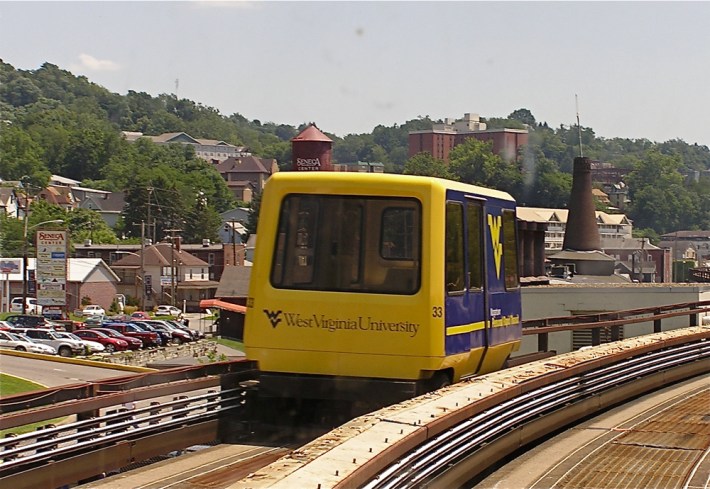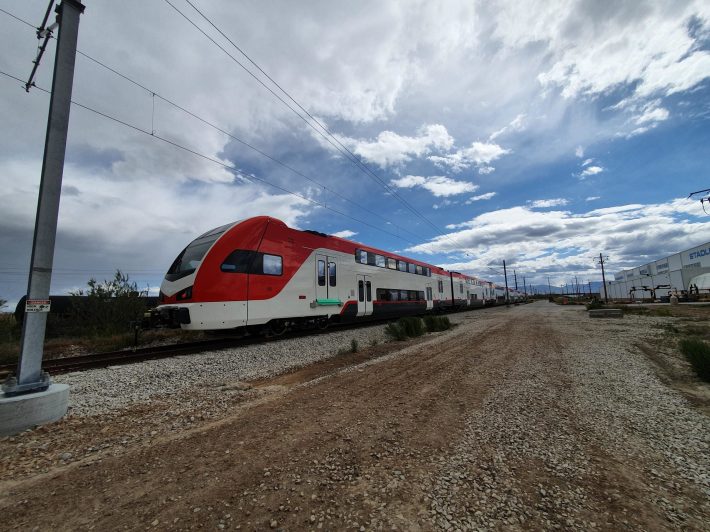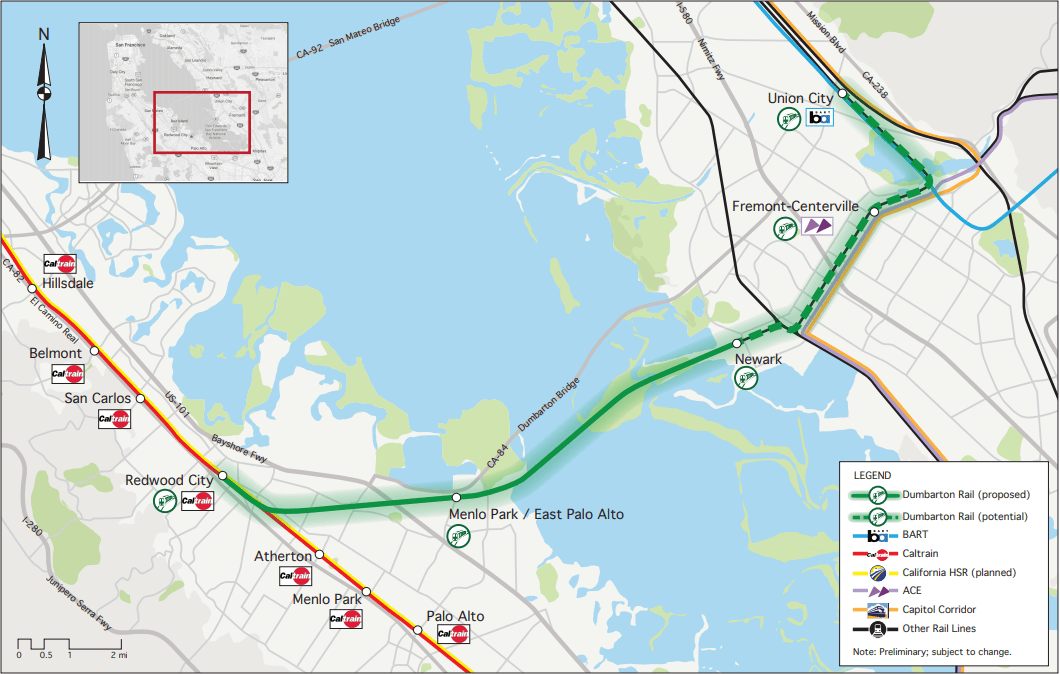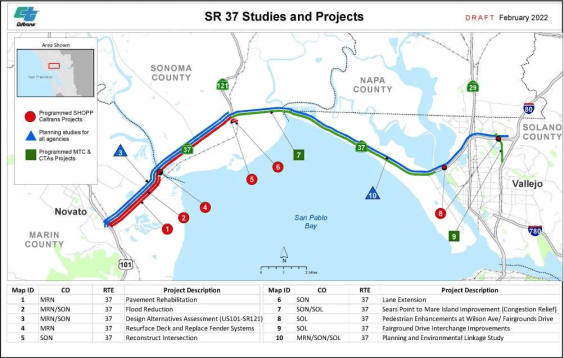The Dumbarton Rail Corridor project provides a once in a century opportunity to construct a vital link that would support an expanded and integrated public transportation network throughout the greater Bay Area region, including coordinated heavy rail connections linking the San Joaquin Valley, Tri-Valley, East Bay and the Mid-Peninsula markets. A high-capacity state-of-the-art heavy rail artery along the Dumbarton Rail Corridor (Corridor) is needed to realize this objective.
The Rail Passenger Association of California and Nevada (RailPAC) is concerned with several of the current assumptions, especially the narrow scope of the project demand forecasts recently published. The demand forecasts in the Dumbarton Rail Corridor Update of March 15, 2021 (Update) limits the project to connecting only the 9-County Bay Area with the Mid-Peninsula. RailPAC views this approach to be an overly restricted utilization of an interregional asset. This after all is the Dumbarton Rail Corridor, a rail link that for nearly 100 years connected the Peninsula with the East Bay, Tri-Valley, San Joaquin Valley, Northern California and the nation.
The potential of this vital asset would be squandered if capacity for high passenger volume is not constructed. The project’s focus should be to maximize the passenger carrying capacity of the Corridor by linking the Dumbarton Rail Corridor with the emerging high capacity, electrified, inter-regional passenger rail network – Caltrain, Capitol Corridor and ACE. The Corridor would thus expand the utility of these existing rail services, including BART. In case of a catastrophic event, a robust high capacity Dumbarton Rail Corridor would provide a critical transportation alternative for the Bay Area.
Regional demand
As was noted above, the Update’s ridership forecast modeling encompasses the 9-County Bay Area Region, including Marin, Napa and Sonoma counties that are a small part of the Corridor’s market and represent limited traffic. A truly balanced demand forecast should include market data from the 21 county mega-region.
For example, the forecast modeling fails to include San Joaquin County and Stanislaus County, suburban areas with affordable housing. Residents of these two counties represent a major segment of potential Dumbarton Rail Corridor commuters to jobs on the Peninsula. If this population were included in the demand forecast, the document would be able to forecast impact of one seat commuter rail service from the San Joaquin Valley to Redwood City, with direct connections to Peninsula cities via Caltrain. However, if the Update’s limited analysis became a reality; it would make mandatory no fewer than two connections to reach Peninsula cities.
Thus it appears that the parameters of the Update’s current scoping are structured to favor recommendation of a particular technology – a technology that is promoted by one of the analysis participants. For a balanced forecast the market demand from the 21mega-region counties should be estimated.
Transit Mode Alternatives
The enhanced level of additional service from an integrated network was not included in the forecasts for the Commuter Rail Transit (CRT) mode. This would have allowed the attribute of long-distance CRT San Joaquin Valley ridership to be added to the local ridership forecast, facilitating a direct comparison with the Autonomous Vehicle Transit (AVT) approach. The enhanced local service and ridership from the AVT model is included in the total ridership forecast which, in RailPAC’s view, is misleading. Omitting consideration of San Joaquin ridership invalidates the AVT versus CRT forecast comparison in the Update.
The study’s objectivity may be subject to question with respect to the definitions given for various transit modes - (CRT), (AVT). Light Rail Transit (LRT), and Bus Rapid Transit (BRT). For example the Update considers only AVT as offering autonomous operation. In fact AVT is a mode in the development stage by a particular vendor and is not yet mature. Analysis of other self-steering transit modes is not presented. Actually self-steering automated CRT and automated LRT have been in service for decades all around the world. Autonomous BRT is in test stage, similar to autonomous heavy haul highway trucks.
CRT, LRT and BRT are mature technologies with multiple equipment vendors and a real world record of performance and costs. In contrast, AVT is an emerging and unproven technology. Further testing and benchmarking are needed before AVT can be introduced as a reliable transportation option. For that reason AVT technology constitutes a high risk investment for stakeholders.
To date, closed route autonomous micro transit systems, also known as Personal Rapid Transit (PRT), have been proposed as a lower volume micro urban transit mode to reduce street traffic. These systems focus on personalized point to point transportation between public transportation hubs and dispersed destinations. By design they are not intended to serve as a higher volume line haul system. While PRT has been conceived to replicate the flexibility of the private automobile for urban areas, to date they have failed to attract much interest. The main obstacle is that cities have resisted installing the numerous elevated guideways needed to develop a true intra-urban network. On the other hand, there are many examples where high capacity transit systems like CRT are stimulating the development of transit-oriented housing and employment centers in urban and suburban localities.

Bridge Design
Bridge functionality must also be evaluated. Building the bridge exclusively for light weight vehicles would create a single purpose asset unusable for meeting alternative emergency related transportation needs. As a result the AVT technology represents a higher risk investment. Reducing the specific bridge risk with a more robust bridge would increase AVT’s infrastructure costs.
A further consideration is that Autonomous Vehicle Transit modules are light weight and high profile. High winds on the Bay could possibly compromise the stability of vehicles traversing the bridge. If this is the case, cross-Bay operations would need to be suspended under windy conditions to safeguard occupant’s safety.

Operational considerations
Because AVT is as yet unproven, cost comparisons to other modes must be based on uncertain assumptions. For example, the Update’s comparison of Operations Center costs to other modes’ costs concludes that the operational costs for the AVT Operations Center are significantly lower than for seasoned modes. That seems questionable given that the AVT Operations Center has to monitor the status of a system with significantly more vehicles than the other modes, has overtakes at local stations, and relies on the Operations Center to monitor the system for security as a result of having no personnel in the field. The eyes and ears of vehicle operators are critical during service disruptions and security incidents. Additionally the report does not document why the CRT mode would have a higher Operations Center cost than other modes.
Another issue is passenger capacity per vehicle. For local neighborhood riders arriving at the AVT station at random times low AVT wait times are a plus. For large groups of riders arriving off a BART, ACE or Caltrain connection the large capacity of CRT, LRT and BRT combined with timed transfers means low wait times for these riders. Except for the quickest of commuters, connecting passengers from BART, ACE or Caltrain to the AVT system would have to queue up, be sorted by destination and wait through the departure of several full AVT vehicles at rush hour. It is therefore critical that ridership demand projections be segmented between (a) local riders within Union City or Redwood City, and (b) Transbay riders traveling across the Bay.
Silo issues
An issue often raised by stakeholders is the balkanized character of the Bay Area’s public transportation network. The Dumbarton Rail Corridor presents an opportunity to address the issue with a rail line integrated into Northern California’s extensive and expanding passenger rail network. But what is proposed is a completely different technology incompatible with any other Bay Area transportation mode, just another disjointed link that appears deliberately designed to serve only local interests. And it adds yet another agency whose mission is solely focused on the creation of a Peninsula-based micro transit urban network.
Conclusion
What should be the vision for the Dumbarton Rail Corridor? One option is for this project to be primarily a local shuttle to link Union City Station District property developments with BART, and Redwood City’s tech offices with Caltrain with some trans-Bay riders in the mix. That approach means connections, often with time consuming waits for trans-Bay rider who would commute using ACE, Capital Corridor, East Bay BART, and Caltrain. Multiple connections with long waits would inevitably disincentivize ridership, doing little to relieve highway congestion.

The alternative option is for the Dumbarton Rail Corridor to be transformed into a key link in Northern California’s passenger rail system. Such a system would expand interregional travel opportunities throughout the greater Bay Area, Tri- Valley and San Joaquin Valley by delivering an array of rail transportation options. RailPAC recommends this vision for the Dumbarton Rail Corridor. We believe the Dumbarton Rail Corridor must be restored as vital component in a comprehensive integrated Northern California passenger rail network.
***
Steve Roberts is President of The Rail Passenger Association of California and Nevada, an all-volunteer organization that advocates for the improvement of commuter and intercity passenger rail service.






